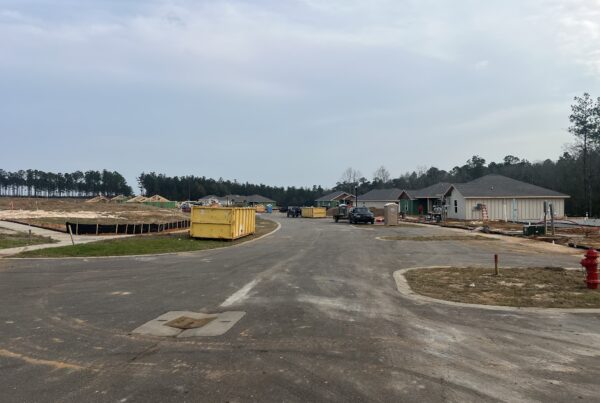Land development is a fundamental aspect of real estate investment, encompassing a variety of projects, from single-family lot development to larger multifamily and commercial endeavors. While many aspects of land development can be glamorous and rewarding, it’s crucial to acknowledge the less glamorous, but equally essential, components. One such aspect that often goes unnoticed is the role of lift stations in managing wastewater in subdivisions. Lift stations play a crucial role in moving wastewater from lower to higher elevations, addressing the unique challenges that can arise during land development projects.
In the realm of land development, single-family lot development stands as a significant and enduring focus for real estate investors. With over a decade of experience in the “dirt game,” our team has successfully developed over 2000 lots to date. This commitment to single-family lot development has allowed us to hone our skills and achieve consistent success in this segment of the industry. However, beneath the surface of this achievement lie the challenges and costs that must be meticulously managed to ensure project success.
The old adage “s*** rolls down hill” may take on a new meaning when it comes to land development and sewage systems. In some cases, the conventional gravity-based flow of wastewater is insufficient, and the waste must be moved “uphill.” This is where the indispensable role of lift stations becomes evident. A lift station, also known as a pumping station, is a crucial piece of infrastructure designed to transport wastewater from lower elevations to higher ones, ensuring efficient and reliable sewage management in a subdivision.
The deployment of lift stations can introduce significant costs and complexities into land development projects. The expense of a lift station can vary widely, depending on factors such as size, capacity, and specific project requirements. A brand-new lift station in our area typically ranges from $300,000 to well over $1 million. However, costs can surge when dealing with the modification or upgrade of existing lift stations, which can involve an entirely new layer of expenditure and logistical challenges.
Consider one of our recent land development projects, where we encountered the need to upgrade a large regional lift station that already serviced an existing neighborhood. The necessity of upgrading an existing lift station necessitates careful planning and execution, as it impacts the functioning of the entire sewage system. Upgrades often entail temporarily shutting down the system and installing bypass pumps to maintain uninterrupted sewage service while the necessary improvements are made.
These bypass pumps, as depicted in the accompanying photos, play a crucial role in ensuring that sewage services continue to operate during the upgrade process. This temporary infrastructure allows for the maintenance and improvement of the lift station without disrupting the lives of the residents in the existing neighborhood or delaying the progress of the land development project. It’s a testament to the intricate balance and complexity involved in the world of land development.
Once the upgrades to the lift station are completed on this particular project, we will be poised to proceed with the construction phase, moving from the realm of sewage system management to the vertical construction of homes. This transition represents a significant milestone in the land development process, where the challenges and costs associated with lift stations are transformed into tangible progress and growth for the community.
In conclusion, land development, with a specific focus on single-family lot development, presents a range of challenges and costs that are essential to understand and manage effectively. Lift stations play a vital role in overcoming one of the less glamorous yet integral challenges in land development – moving wastewater from lower to higher elevations. Whether through the construction of new lift stations or the upgrading of existing ones, these infrastructure investments are crucial to ensuring the smooth flow of development projects and the sustainable growth of communities. Through careful planning, experience, and investment, these challenges can be successfully navigated, paving the way for successful land development projects and vibrant communities.



